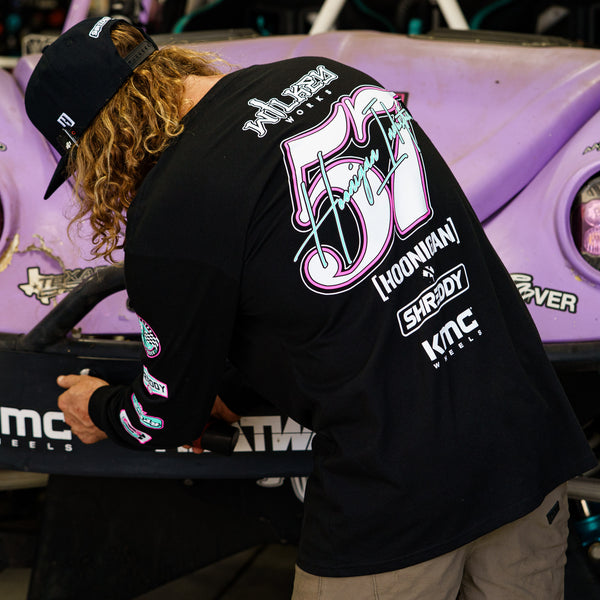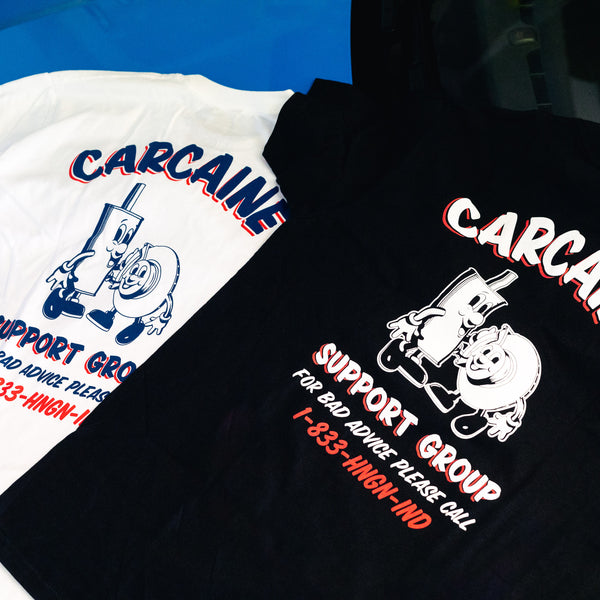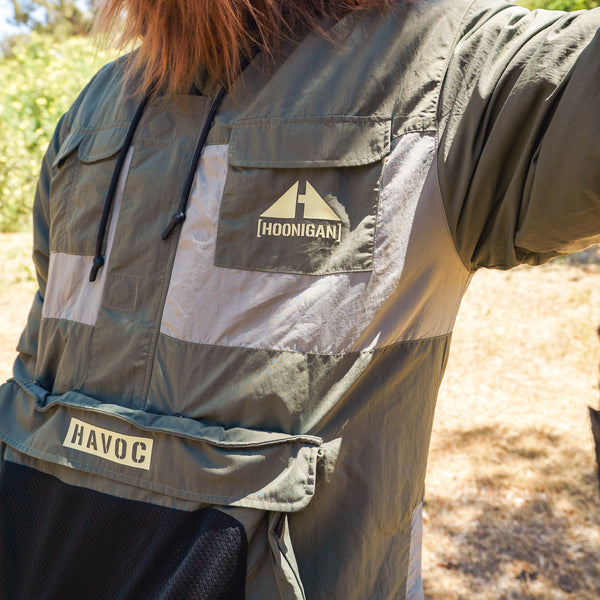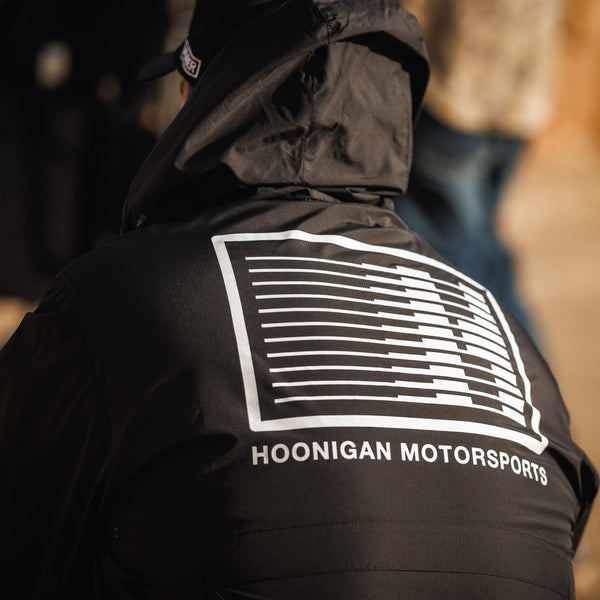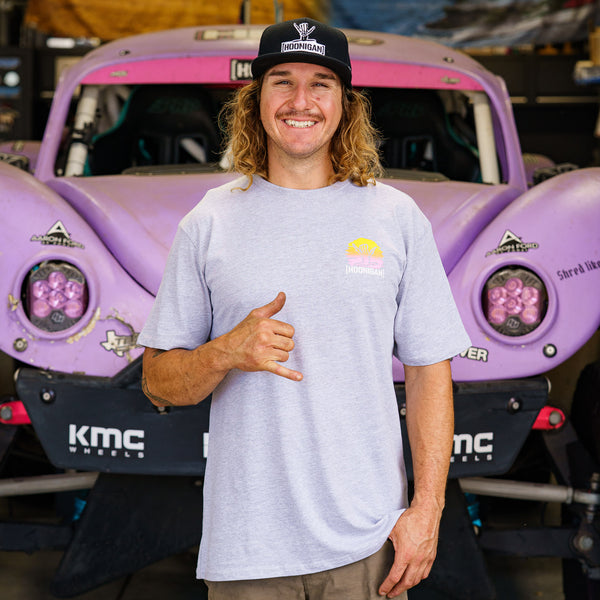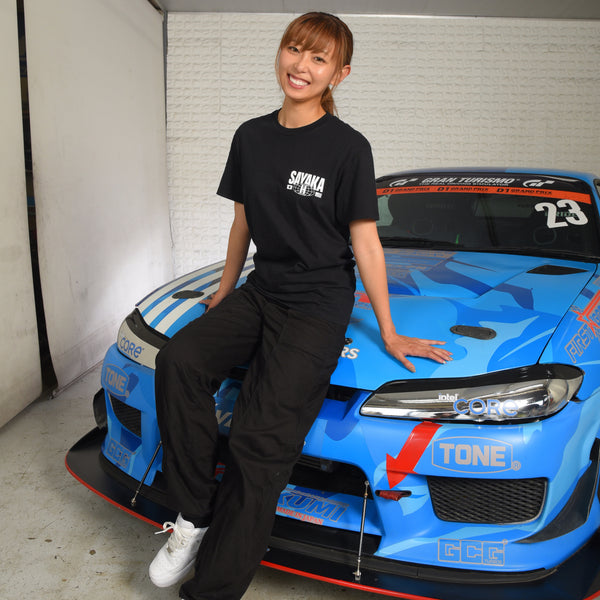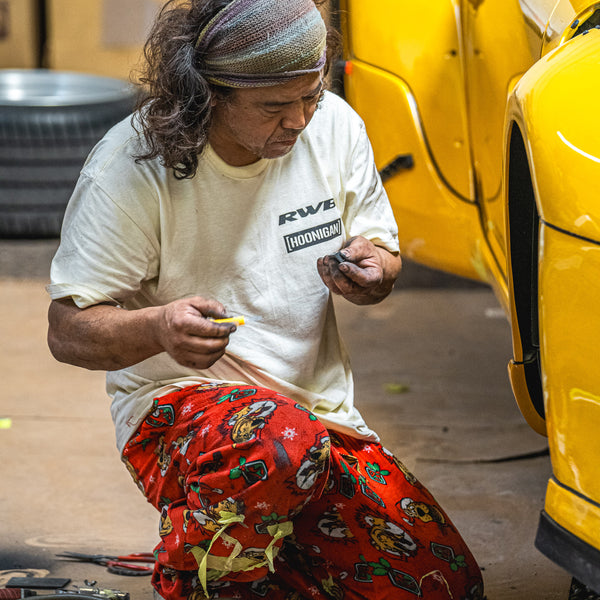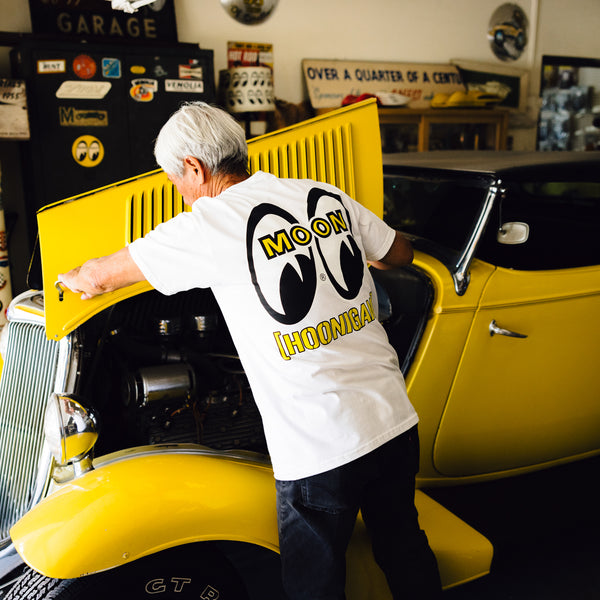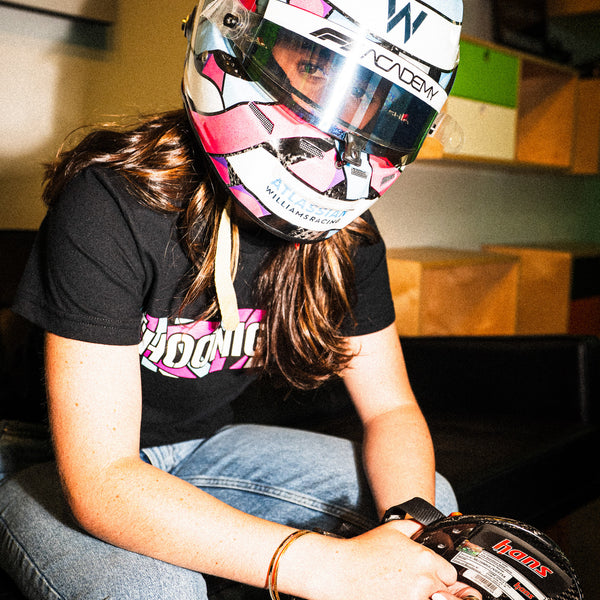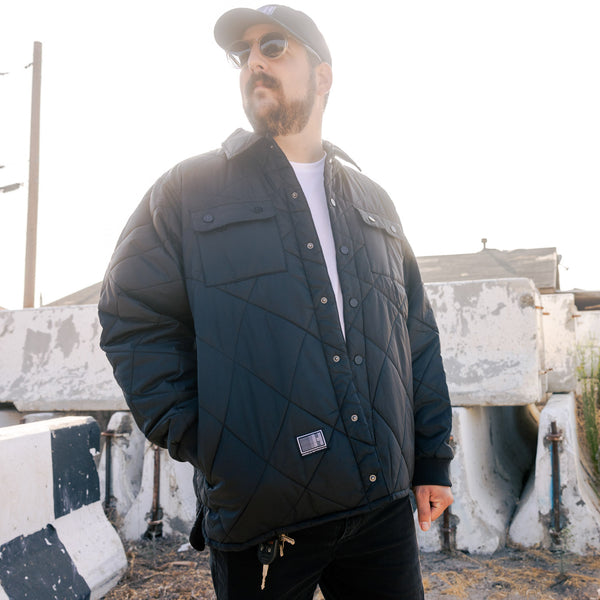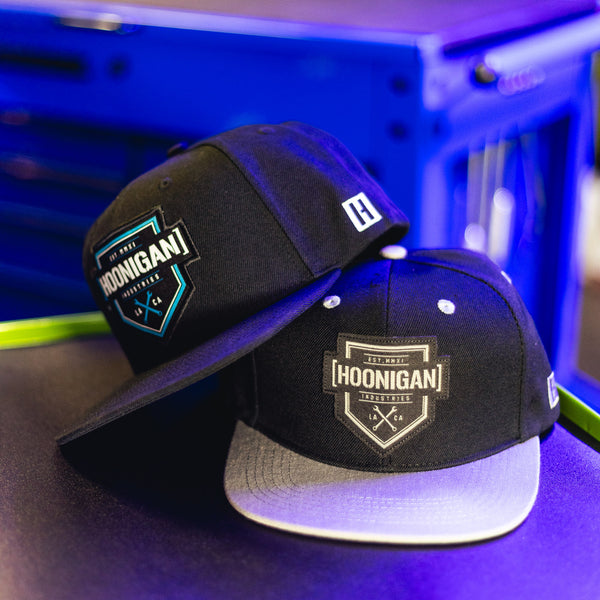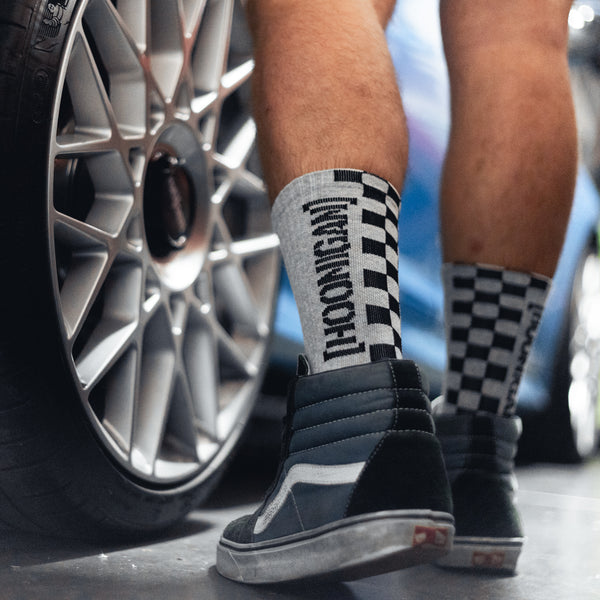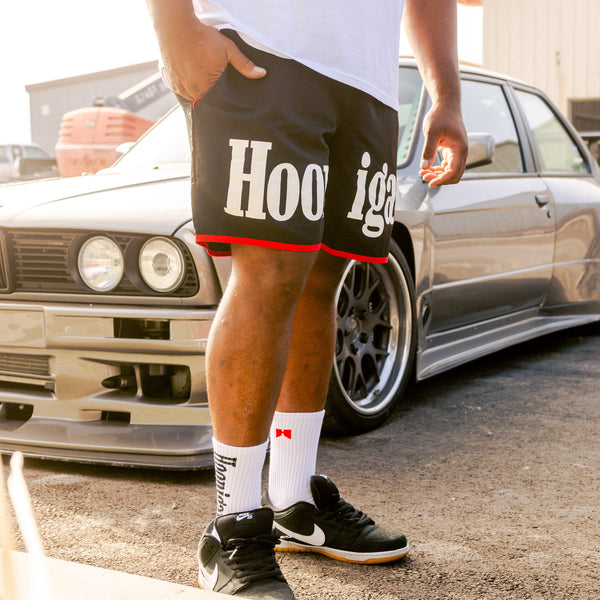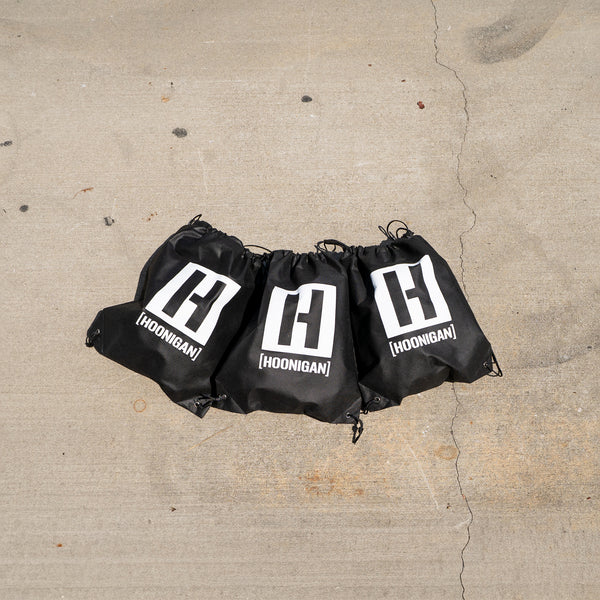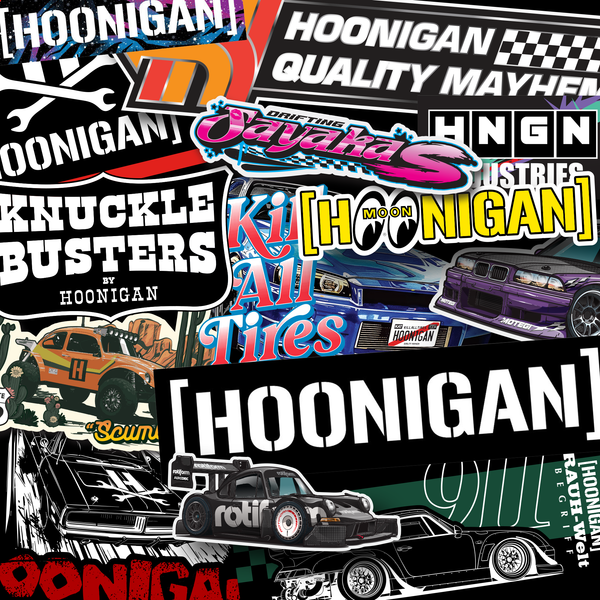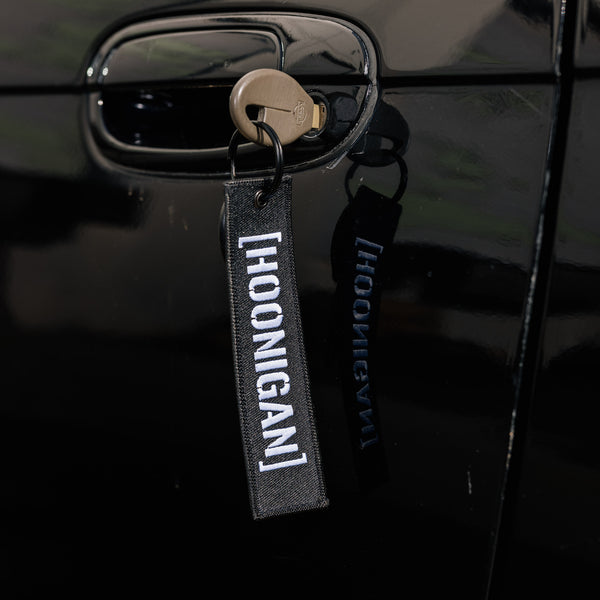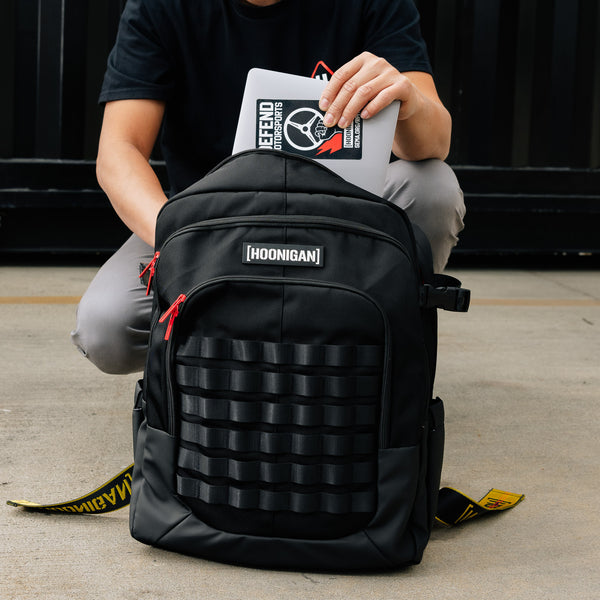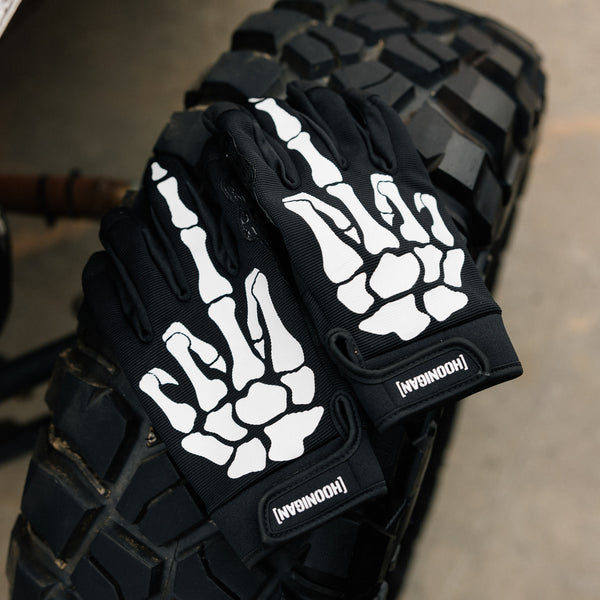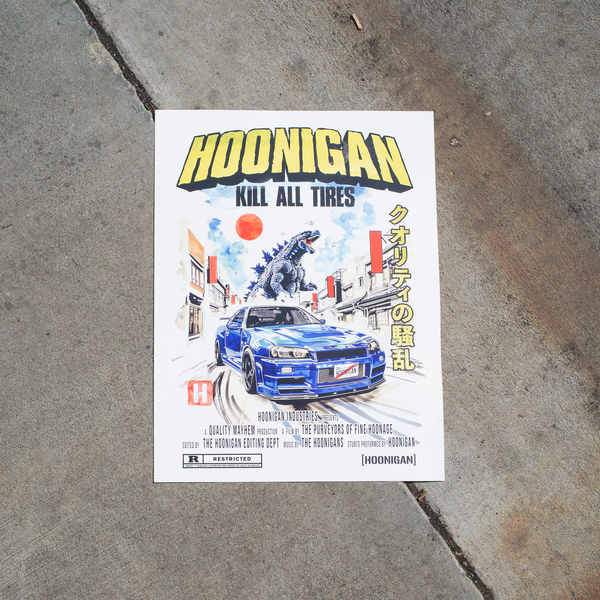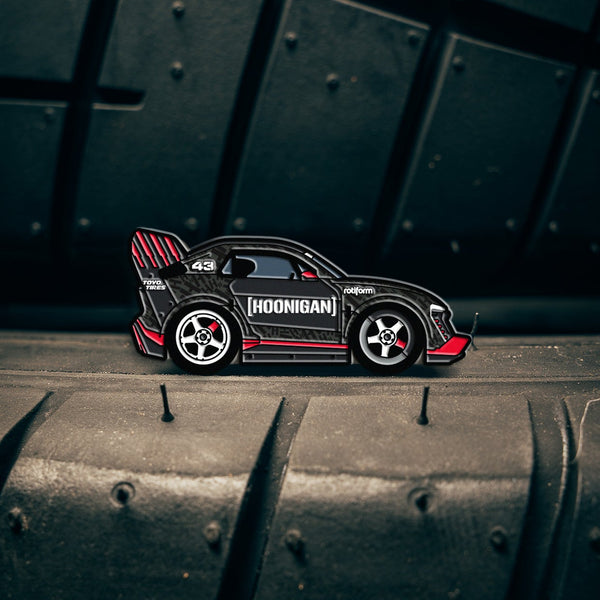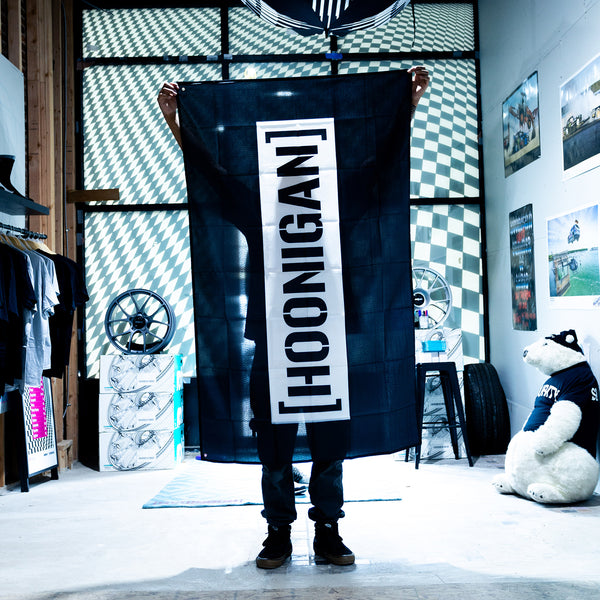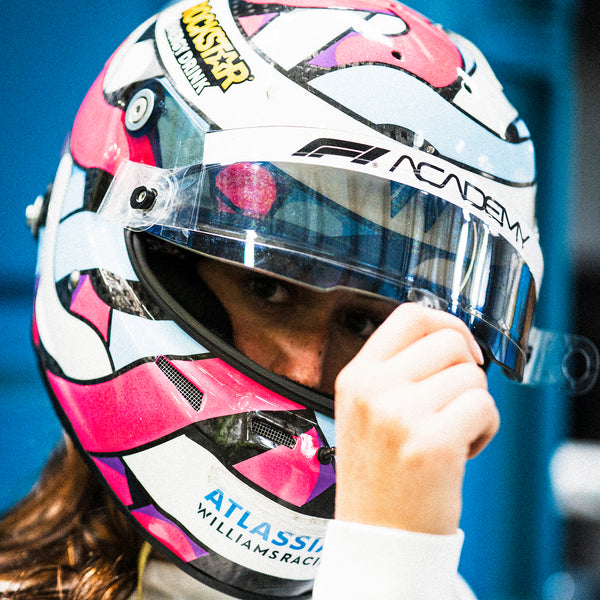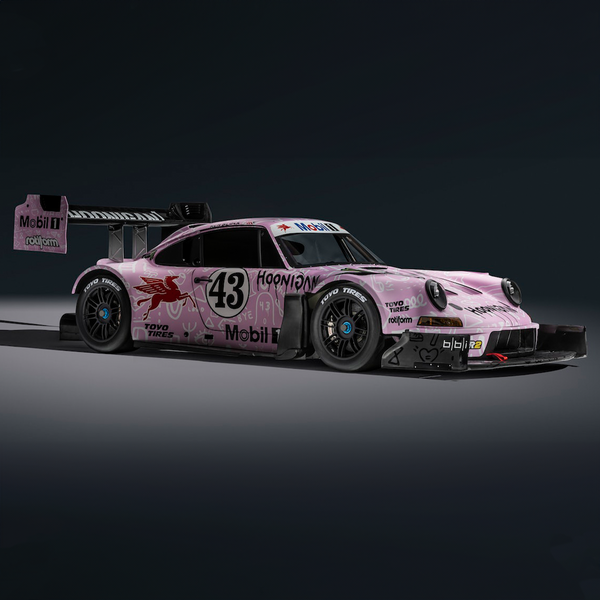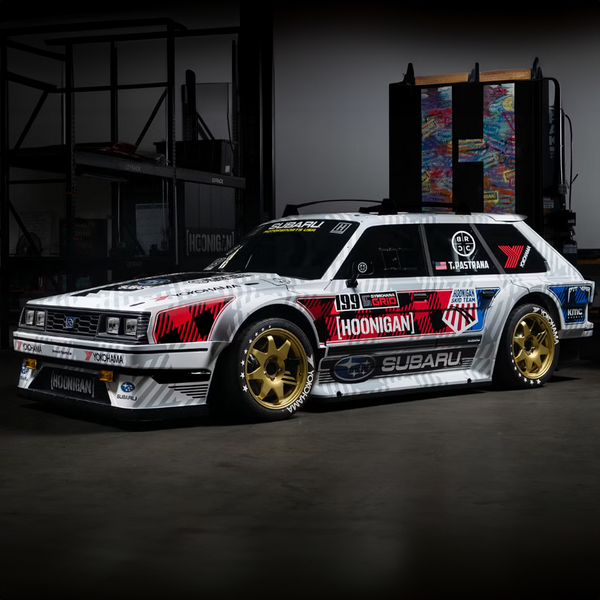One could say Ben Mich’s 1993 Mazda RX-7 R1 is a breath of fresh air as it isn’t a modified rotary engine car with another V8 swap or even another drift build. However, he still draws influence from the car’s Japanese roots in the time attack domain.
 |
 |
 |
 |
 |
 |
 |
“I bought the car ten-years ago as a roller with a blown engine,” Ben recalls on his initial purchase of his 1993 Mazda RX-7. “It was always something I had planned on buying. I had tried getting one when I was 21, but just didn’t have the funds. I promised myself that I would buy it before I was thirty and finally got this one when I turned 29.” The car sat in his garage for a while as he had an S13 240SX he was drifting and eventually road raced with as well as a time attack R32 Skyline GT-R. In 2016, those cars blew their engines and he finally decided it was time to finish up the RX-7.
 |
 |
“It was sort of a blessing in disguise,” said Ben, “blowing both engines and my engine builder taking longer than expected to build them back up forced me to finish the RX-7.” In the past, Ben’s friends and teammates of the Hardtimes Racing crew would come over, helping him work on the car, then move him to the side to do all of the harder work. This time, he would be the primary builder of the FD and installer of all the parts on his car. “I did it very slow, but I was learning at my own pace,” said Ben.
 |
Since purchasing it in 2010, Ben collected parts to make it into the perfect car, one that would reflect his love of the FD and Japanese time attack. Of course, if you’re building a rotary powered Mazda there is only one real source to take inspiration from: RE Amemiya. Ben and a partner sourced parts from Japan to build a US version of a RE time attack car. The front bumper is a Mazdaspeed GT-C piece with an Exact Performance front splitter. From here, the spec sheet is filled with the Japanese rotary specialist’s parts.
 |
 |
 |
 |
 |
 |
 |
 |
 |
The headlights were converted to RE Amemiya Sleek Headlights with matching carbon LED tail lights. The wider stance comes from the ADGT2 wide body kit. The side markers just past the wheel arches were the hardest to source for Ben. “I tried using classic car lights, glass motorcycle lights, but nothing seemed to match,” he said, “Then I finally messaged some RE Amemiya owners in Japan and they led me to the secret: it was a Ferrari F40 side marker.”

With such a wide body, you need a new set of wheels that work with it. This FD sits on a set of Desmond RegaMaster Marquis Promada wheels in 18x9.5 +18 up front and 18x10.5 +18 out back with ARP extended wheel studs on all corners. These beautiful wheels are covered in sticky Bridgestone RE71R tires in 265/35R18 front and 285/30R18 rear. The functional stance is thanks to a set of Reinhart three-way adjustable coilovers.
 |
 |
 |
 |
 |
Chassis stiffening is done by a R1 front strut tower bar while the rear is a KTS rear tower bar. Under the ADGT2 front fenders are a set of Nagisa fender braces. Body roll is controlled by a Garage Revolution front sway bar on Sakebomb Garage front sway bar mounts and Improved Racing end links. The rear gets a bit crazy with a Sard rear sway bar with its adjustable blade bar ends. This is similar to how high-end race cars adjust roll by turning the blade to adjust the flex put on the bar itself. Straight up-and-down is fully stiff while turning it flat will make the bar softer.
 |
 |
 |
 |
The mirrors are RE Amemiya’s fender mount versions in black that complement the AD9 Hood’s carbon Gurney flaps that cause air to pull out of the engine bay more efficiently. It creates a high-pressure area that draws low pressure air out from under the hood. The aerodynamics are RE Amemiya’s carbon parts with the fender diffusers, rear canards, and rear diffuser but the wing is the GT2 High-Mount. While it doesn’t provide any real benefit, the Carbon-Look Door Handles compliment the black on white theme of the body.


 |
 |
 |
 |
The RE Amemiya front and rear tow hooks allow the car to be pulled at the strongest parts of the chassis, if Ben needs it to be towed or pulled out of a sand pit. However, the chances of him going off are reduced with the use of AP Racing four-piston calipers and two-piece rotors under the front RegaMasters while the rear is a set of two-piston calipers with Sakebomb Garage competition rotors with extended brake caliper mounts. The brake pads are Carbotech pieces with XP10 pads in the front and XP8 pads in the rear. To prevent the front rotors from overheating, a Technical Auto One’s front brake duct kit pulls air from the Mazdaspeed front bumper to the rotor hats. A Mazda 929 brake master cylinder provides the fluid to the calipers as it is larger than the original FD version.
 |
The beauty of this engine is that it’s very simple, both in the theory of its Wankel based design and in how Ben took care of it. Originally, he had the 13B-REW rebuilt with a street port but, just before Gridlife, the engine wasn’t running right and wasn’t building boost properly. It turns out the original builder had not done as good a job with the porting and didn’t realize one of the rotor faces was worn out and reduced compression on its side. Instead of dealing with the hassle of a rush rebuild, Ben opted to purchase a brand new 13B from Mazdaspeed directly and this fresh Wankel sits on Himni Motor Mounts.
 |
 |
 |
While its internals aren’t touched or even ported, everything outside of it has been improved or replaced. He also decided he liked the throttle response and near instant boost of the sequential turbo setup. “I had boost lag in my turbo engines,” he stated, “even when the other 13B wasn’t running right, it still had good boost down low, so I kept the sequential turbochargers.” They aren’t the stock pieces, but they are BNR Supercars Stage Three units, which are based off of remanufactured Hitachi HT12 turbos. The idea is to improve reliability over the stock HT12s that boost over 15-psi by installing better thrust bearings on the housings. At over 15-psi, the boosted air forces oil to go out of the stock 270-degree bearing at the 90-degrees of missing bearing. The new bearing features a 360-degree path for oil to flow around instead.
 |
 |
 |
 |
 |
 |
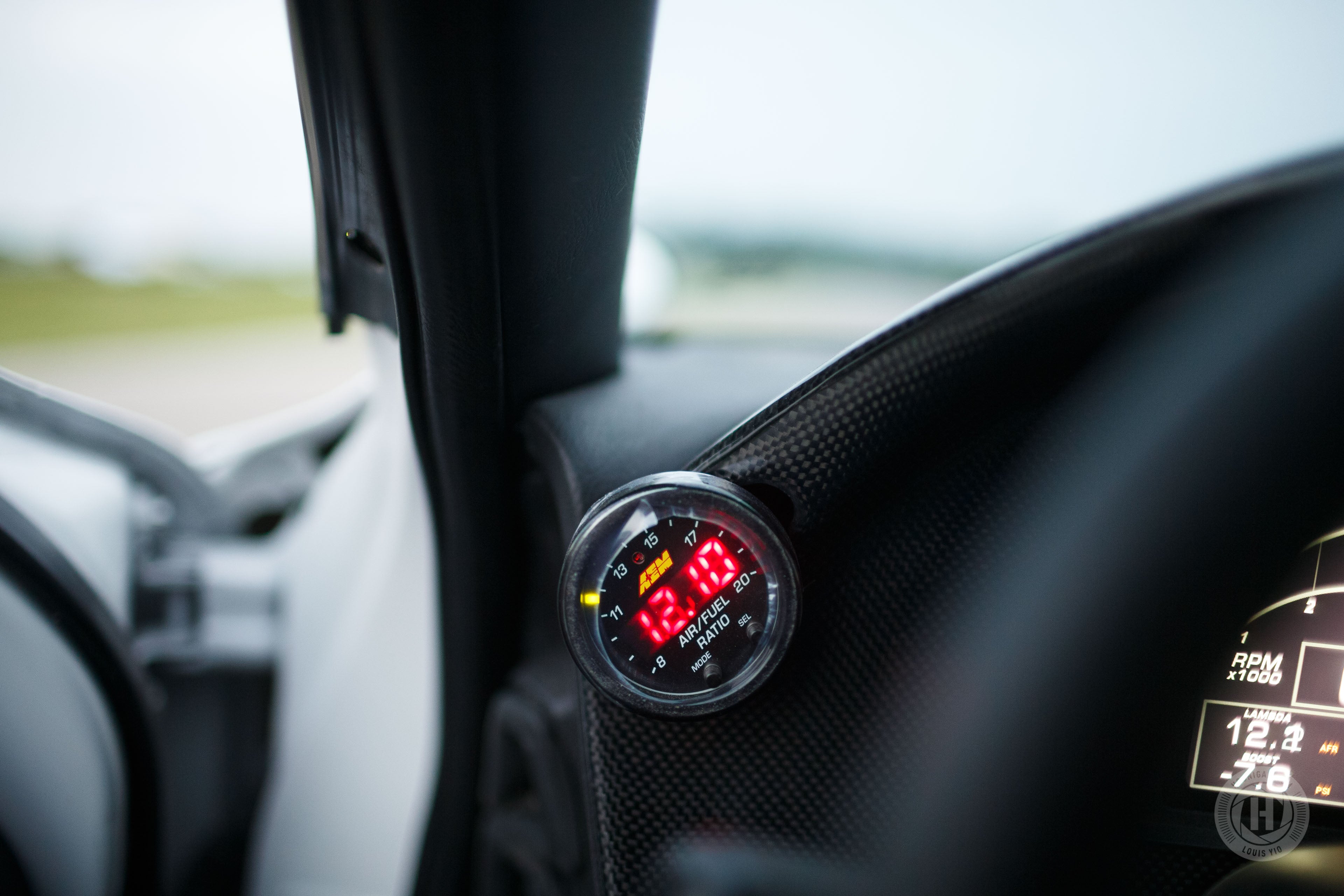 |
 |
From the turbine side of each turbo, boosted air is sent to a GReddy Racing V-mounted intercooler and radiator setup. Further cooling that boosted air is an AEM Water/Methanol injection kit. There it leads to a stock upper intake, while the lower intake is made by Xcessive. Getting the exhaust out of the turbos is done with an M2 downpipe followed by a RE Amemiya Stardust Factory mid-pipe. The killer sound is made by a Ganador Titanium cat-back exhaust system.
 |
 |
Of course, you can’t build boost without fuel and spark. The fuel injectors are Injector Dynamics ID725’s on the primary and ID2000’s on the secondary side that are fed fuel by a pair of CJ Motorsports fuel rails. The ignition system is enhanced by an HKS Twin Power, a hybrid of a transistor ignition and Capacitive Discharge Ignition (CDI) Module, on both primary and secondary ignition coils. The factory ECU has been removed and replaced by an APEXi Power FC motorsports ECU, that was then programmed by John Renna of Renna-Tuned of Pennsylvania.
 |
 |
 |
 |
 |
 |
 |
The transmission is the factory five-speed, but power is transferred from the engine to its input shaft by an Exedy Hyper Twin clutch and flywheel. A Mazdaspeed Power Plant Frame attaches from the output shaft side of the transmission to the rear differential. It’s designed to improve on the OEM power plant frame, which prevents the torque of the engine from flexing the chassis. At least that’s what Mazda says it does. The Banzai Racing Transmission Crossmember probably does more to prevent that, honestly.
 |
The rear differential is the same unit that has always been in the FD chassis, however this one uses a ring and pinion from a RX-8 in a 4.44:1 gear ratio. The Cusco Two-Way limited slip differential helps put power down and allows the rear to lock slightly off throttle for better braking between the rear wheels.
 |
 |
The inside of Ben’s car is a mix of racing safety and street-worthy with the addition of an Exact Performance four-point roll bar behind the Recaro SPG fixed seats. A duo of Schroth Racing six-point harnesses keeps both Ben and his passenger in their seats during high-G experiences. The C’s short shifter keeps gear rowing quick while the RE Amemiya shift knob perfectly fits in Ben’s hand for gear changes when he removes his right hand from the Endless steering wheel. A STACK LCD dash sits where the Mazda gauges once resided, but it’s held in place by a carbon fiber panel.
 |
 |
 |
It would have been very easy to have swapped in a Chevrolet Performance V8 inside this FD chassis. It could have even been turned into a drift car. Ben could have gone single turbo instead of sequential. However, he took inspiration from time attack drivers in Japan and built his version of a RE Amemiya FD RX-7. “It’s such a timeless look,” says Ben, “and those RE Amemiya time attack cars look amazing.” He took this inspiration further by keeping the build simple and reliable by using a stock 13B-REW from Mazdaspeed and kept it responsive by retaining the sequential turbocharger setup. Whatever the reason he did it, it’s nice to see a car that retains its sole and yet remains functional on track.
Owner/Driver: Ben Mich @wutangben
Car: 1993 Mazda RX-7 R1
Engine/Powertrain: Mazdaspeed 13B-REW; BNR Supercars Stage 3 sequential HT12 turbochargers; M2 down pipe, RE Amemiya Stardust Factory mid pipe, Ganador Titanium exhaust; FD3S Differential with RX-8 4.44:1 ring and pinion; Cusco 2-way LSD
Transmission: Mazda R15M-D; Exedy Hyper twin clutch and flywheel; C’s short shifter
Exterior: RE-Amemiya ADGT2 Wide Body kit with Mazdaspeed GTC Front Bumper
Interior: Recaro SPG fixed seats; Schroth Racing six-point harnesses; Exact Performance four-point roll bar; RE Amemiya shift knob; Endless steering wheel; STACK LCD dash
Electronics: APEXi Power FC motorsports ECU
Wheels/Tires: Desmond RegaMaster Marquis Promada 18x9.5 +18 front, 18x10.5 +18 rear; Bridgestone RE71R 265/35R18 front, 285/30R18 rear
Suspension/Brakes: Reinhart 3-way adjustable coilovers; Garage Revolution front sway bar, Sard rear sway bar; AP Racing four-piston calipers; Carbotech XP10 front pads and AP Racing two-piece rotors front; Sakebomb Garage competition rotors; Carbotech XP8 rear pads
Instagram: Lusciousy
[banner-full page="banner-shop"]
